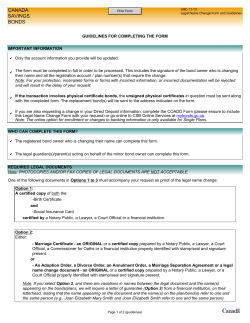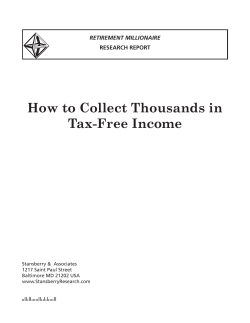
***This is a sample exam is lacking some questions over... general chemistry sequence this semester. For a sampling of some...
***This is a sample exam is lacking some questions over chapter 12 as this is a new chapter for the general chemistry sequence this semester. For a sampling of some chapter 12 problems, see the additional documents including practice exam questions from Chapter 12 1. How many electrons, protons and neutrons does 87Sr2+ have? a. 38 protons, 49 neutrons and 38 electrons b. 40 protons, 47 neutrons and 38 electrons c. 38 protons, 49 neutrons and 36 electrons d. 38 protons, 38 neutrons and 49 electrons e. none of the above are correct 2. What is the formula of manganese (VII) oxide? a. Mn7O b. Mn2O7 c. MnO d. MnO2 e. Mn7O2 3. What is the product of the reaction between calcium and fluorine? a. CaF b. Ca2F c. Ca2F3 d. CaF3 e. CaF2 4. What is the quantity of Fe2O3 that will be produced if 5.00 g of FeS2 is reacted with 11.0 g of oxygen according to the following reaction: 4 FeS2 (s) + 11 O2 (g) -‐-‐> 2 Fe2O3 (s) + 8 SO2 (g) a. 3.33 g b. 9.98 g c. 6.65 g d. 1.55 g e. 20.96 g 5. What is the oxidation number of the chlorine atom in the compound Ca(ClO4)2? a. –1 b. +1 c. +3 d. +5 e. +7 6. Which of the following compounds is NOT a strong electrolyte? a. K2CO3 b. H2SO4 c. Ba(OH)2 d. C2H5OH e. more than one of the above 7. If 258 mL of a 0.500 M AgNO3 solution is mixed with 500 mL of a 0.312 M NaCl solution, what is the identity and mass of the precipitate that is formed? a. Precipitate = AgCl, mass = 18.5 g b. Precipitate = NaNO3, mass = 11.0 g c. Precipitate = AgCl, mass = 26.5 g d. Precipitate = AgCl, mass = 53.0 g e. Precipitate = NaNO3, mass = 13.3 g 8. How much 0.02500 M nitric acid solution (in mL) is needed to titrate 125.0 mL of a 0.01000 M calcium hydroxide solution? Hint: Begin by writing the acid-‐base neutralization reaction. a. 50.00 mL b. 100.0 mL c. 125.0 d. 150.0 e. 200.0 9. Which substance is a product of the reaction between Na(s) and HNO3 (aq)? a. NaNO3 b. H2 (g) c. NaH d. Both a and b e. None of the above; no reaction occurs Given a chunk of an unknown element you perform the following experiments: You place it into a graduated cylinder containing water and the level of the water raises from 50.0 mL to 58.0 mL. Using a digital balance you measure the mass to be 18.56 g. Using a calorimeter you determine that 1303 J of heat is required to raise the temperature from 25 ˚C to 125 ˚C. Use this information as needed to answer the following two questions: 10. What is the density of this element? a. 0.43 g/cm3 b. 2.32 g/cm3 c. 0.32 g/cm3 d. 3.35 g/cm3 e. 1.89 g/cm3 11. What is the specific heat of this element? a. 1.32 J/g-‐K b. 13.0 J/g-‐K c. 1.63 J/g-‐K d. 0.702 J/g-‐K e. 0.452 J/g-‐K 12. From the following enthalpies of reaction: 2 C2H6 (g) + 7 O2 (g) → 4 CO2 (g) + 6 H2O (l) ∆H˚ = –3120 kJ C (s) + O2 (g) → CO2 (g) ∆H˚ = –394 kJ 2 H2 (g) + O2 (g) → 2 H2O (l) ∆H˚ = –572 kJ ∆H˚=? € Calculate ∆H˚ for the following reaction. € 2C(s) + 3H2(g) → C2H6(g) € a. –86 kJ b. –3206 kJ c. –172 kJ € d. 1517 kJ e. None of the above 13. Ozone (O3) exothermically decomposes to give oxygen according to the following reaction: 2O3(g) -‐-‐> 3O2(g) ∆H = -‐285.4 kJ How much heat will be released by the decomposition of 15.0 g of ozone? a. 44.6 kJ b. 89.2 kJ c. 285 kJ d. 66.9 kJ e. none of the above 14. Increasing the intensity of a light source will have which of the following effects. a. It will increase the flux (photons/sec) of photons being emitted b. It will increase the energy of the photons being emitted c. It will increase the frequency of the photons being emitted d. It will decrease the wavelength of the photons being emitted e. All of the above 15. What is the ground-‐state electron configuration for Fe3+? a. [Ar] 4s23d6 b. [Ar] 4s23d4 c. [Ar] 4s13d4 d. [Ar] 3d5 e. none of the above 16. How many electrons in gallium (Ga) have a magnetic quantum number 2? a. 0 b. 2 c. 4 d. 6 e. 10 17. The bond energy of nitrogen is 941 kJ/mol. What wavelength of electromagnetic radiation is equal to the amount of energy required to break the bond in one molecule? a. 127 nm b. 1.31 x 1015 m c. 315 nm d. 866 nm e. None of the above 18. Arrange Ne, Ar, S, P, As, and Ca in order of increasing first ionization energy. a. Lowest IE Ne < Ca < As < P < S < Ar Highest IE b. Lowest IE Ne < Ar < Ca < As < P < S Highest IE c. Lowest IE Ca < As < P < S < Ne < Ar Highest IE d. Lowest IE Ca < As < P < S < Ar < Ne Highest IE e. Lowest IE Ne < Ar < S < P < As < Ca Highest IE 19. Arrange B, Ca, Ga and Cs in order of increasing atomic radius. a. Smallest B < Ca < Ga < Cs Largest b. Smallest Cs < Ca < Ga < B Largest c. Smallest Ga < B < Cs < Ca Largest d. Smallest B < Ga < Ca < Cs Largest e. Smallest Ga < B < Ca < Cs Largest 20. Predict which C-‐O bond is the longest in CO32–, where the three oxygen atoms are labeled as O1, O2, and O3? O1 C O2 O3 a. C-‐O1 b. C-‐O2 c. C-‐O3 d. Both b. and c. are longest and identical e. All three, a., b. and c. are identical in length 21. Draw the proper Lewis structure of OF2 and calculate the formal charge and oxidation number, respectively on oxygen? a. 0, –2 b. –2, –2 c. 0, +2 d. –2, +2 e. None of the above Use the table below as needed for the next question: Table 08.04 22. Estimate the heat of reaction, ∆H˚, between formaldehyde and chlorine to form phosgene and hydrogen using the above bond energy table: H2CO(g) + Cl2(g) -‐-‐> Cl2CO(g) + H2(g) a. –2160 kJ b. –109 kJ c. +109 kJ d. –24 kJ e. none of the above 23. Which of the following ionic compounds has the greatest lattice energy? a. KCl b. RbBr c. CsI d. SrSe e. CaO 24. Based on the Lewis dot structures, predict the ordering of N–O bond lengths in the following molecules: NO+, NO2-‐ and NO3-‐. a. Shortest N-‐O bonds NO3– < NO2– < NO+ Longest N-‐O bonds b. Shortest N-‐O bonds NO2– < NO3– < NO+ Longest N-‐O bonds c. Shortest N-‐O bonds NO+ < NO2– < NO3– Longest N-‐O bonds d. Shortest N-‐O bonds NO+ < NO3– < NO2– Longest N-‐O bonds e. Shortest N-‐O bonds NO+ < NO3– = NO2– Longest N-‐O bonds 25. What is the molecular geometry of SF4. a. tetrahedral b. see-‐saw c. T-‐shaped d. trigonal bipyramidal e. none of the above 26. What is the molecular geometry of IF3. a. tetrahedral b. trigonal planar c. T-‐shaped d. trigonal bipyramidal e. trigonal pyramidal 27. What is the hybrid orbital set used by the carbon atom in the molecule H2CO? a. sp b. sp2 c. sp3 d. sp3d e. sp3d2 28. Which of the following molecules is not linear. a. BeCl2 b. HCN c. SO2 d. CO2 e. both a and c 29. Which molecule is non-‐polar? a. CO2 b. SF4 c. BrF5 d. ClF3 e. All of the above Use the following diagrams as needed for the next question: 30. Which of the following would you expect to have the shortest oxygen-‐oxygen bond distance? (Hint: Consider preparing MO diagrams for these molecules). a. O2-‐ b. O2 c. O2+ d. O22-‐ 31. Consider or draw the Lewis structures of acetylene (HCCH) and hydrogen peroxide (HOOH). What types of covalent bonds exist between the carbon atoms in acetylene and the oxygen atoms of hydrogen peroxide, respectively? a. Triple, single b. Triple, double c. Triple, triple d. Single, double e. single, single 32. What is the formal charge of sulfur in the proper Lewis structure of sulfate ion? a. –2 b. –1 c. 0 d. +1 e. +2 33. The molecule iodine monochloride (ICl) has a dipole moment of 1.6 D and a bond length of 2.32 Å. What is the effective charge on I in units of electronic charge, e. a. +1.0 e b. –0.69 e c. –0.072 e d. –0.14 e e. +0.14 e 34. A 2.00 L sample of air at –50°C has a pressure of 700 torr. What will be the new pressure (torr) if the temperature is raised to 50°C and the volume is increased to 4.00 L? a) 410 35. c) 485 d) 506 e) 552 A 2.48 L sample of He at 739 torr is mixed with 6.08 L of Ar at 325 torr both at 25°C is placed in a 4.80 L container at 25°C. What is the partial pressure (atm) of He? a) 0.48 36. b) 440 b) 0.54 c) 0.42 d) 0.50 e) 0.38 Ethylene, C2H4, reacts with O2 according to the following equation. What volume (L) of oxygen at STP is needed to react with 1.50 moles of C2H4? C2H4(g) + 3 O2(g) − −−−→ 2 CO2(g) + 2 H2O(g) a) 4.50 37. b) 33.6 c) 101 The a value in the Van der Waals equation for HCl is for HCl is than the b value for HF. d) 67.2 e) 89.6 than the a value for HF. The b value a) larger, larger b) smaller, smaller c) larger, smaller d) smaller, larger 38. The Ne atom has 10 times the mass of H2. Which of the following statements is true? I. At 25°C they both have the same kinetic energy. II. Ten moles of H2 would have the same volume as 1 mole of Ne. III. One mole of Ne exerts the same pressure as one mole of H2 at STP. IV. A H2 molecule travels, on average, 10 times faster than a Ne atom. V. At STP, one liter of Ne has 10 times the density of 1 liter of H2. a) I, II d) I, III, IV, V 39. c) 0.361 nm d) 0.352 nm e) 0.340 pm b) 2, 6 c) 4, 6 d) 6, 2 e) 2, 2 Which of the following has the highest normal boiling point? a) H2O 42. b) 0.372 nm MgO crystallizes in the same lattice structure as NaCl. How many Mg2+ ions are present in each unit cell and what is the coordination number of O2–, respectively? a) 4, 4 41. c) II, IV, V The density of nickel (face-centered cubic cell) is 8.94 g/cm3 at 20°C. What is the length of an edge of a unit cell? a) 0.392 nm 40. b) I, II, III e) I, III, V b) NH3 c) HF How many Hydrogen Bonds does the following molecule contain? H H | | H-O-C-C-N-H | | | H H H a) 1 b) 2 c) 3 d) 5 e) 7 43. Which of the following molecules in a-c has the greatest enthalpy heat of vaporization? H H | | a) H - C - C - F | | H H H H | | b) H - C - C - Cl | | H H H H | | c) H - C - C - Br | | H H 44. The triple point of iodine is at 90 torr and 115°C. This means that liquid I2 ____________. a) b) c) d) e) is more dense than I2(s). cannot remain a liquid above 115°C. cannot remain as a liquid at standard atmospheric pressure. cannot have a vapor pressure less than 90 torr. can remain a liquid at a pressure of 10 torr.
© Copyright 2025





















